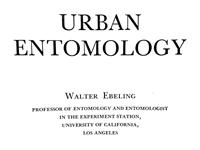Reduced-risk IPM

Click here to go to the project website
For the past decade there has been an awareness that pest control practices in urban environments contribute to the runoff of insecticides in to urban waterways. The use of insecticide sprays to control ants and other pests such as spiders, cockroaches, and other occasional invaders around structures may be among the major contributing factors. It has been estimated that > 95% of the pyrethroid use by PMPs is to control pests in and around structures.
The primary goal of this project is the implementation and adoption of least toxic IPM strategies and alternative materials to control ants in urban environments, to reduce the amount of pyrethroids and fipronil used to control ants, and to develop strategies that prevent or significantly reduce the risk of insecticide runoff. We plan to design and implement IPM strategies that pest management professionals (PMPs) can readily adopt for their business. In particular, the project will focus on reducing the use of pyrethroids (bifenthrin, cypermethrin, cyfluthrin, etc.) and fipronil, and reducing the likelihood that these insecticides become dislodged and runoff into urban waterways. To achieve the goals, we will put special emphasis on the use of targeted and restricted application method and the use of other alternative insecticidal materials.
One strategy is to reduce the frequency of applications and the amounts of pyrethroids applied by PMPs. Target and restricted applications proposed by DPR will be evaluated to determine their cost effectiveness and efficacy. By reducing the frequency and amount of prethroids applied and limiting the sites where they are applied, the potential for insecticide runoff should be reduced. Our previous project in 2008 demonstrated that PMPs could reduce pyrethroid applications by 75% and still provide cost-effective pest control. Recent studies also suggest that modified application techniques such as pin-stream applications or spray free zones on hardscapes dramatically reduce insecticide runoff. Another strategy is to replace the pyrethroids with alternative materials such as botanicals oils for treating the sites that are venerable for potential dislodge of insecticides (e.g., driveways). This project will expand on our previous results by incorporating alternative control strategies in urban IPM practices that can effectively replace pyrethroids and fipronil for the sites that are most sensitive for insecticide runoff.
The reduced-risk IPM will be adopted on selected service routes in Orange and San Diego counties by our three industry team members, Western Exterminator, Orkin Inc., and Clark Pest Control. By demonstrating successful case studies with the participating industry team members, we will ensure that IPM practices will be adopted by other PMPs.
Funded by California Department of Pesticide Regulation







